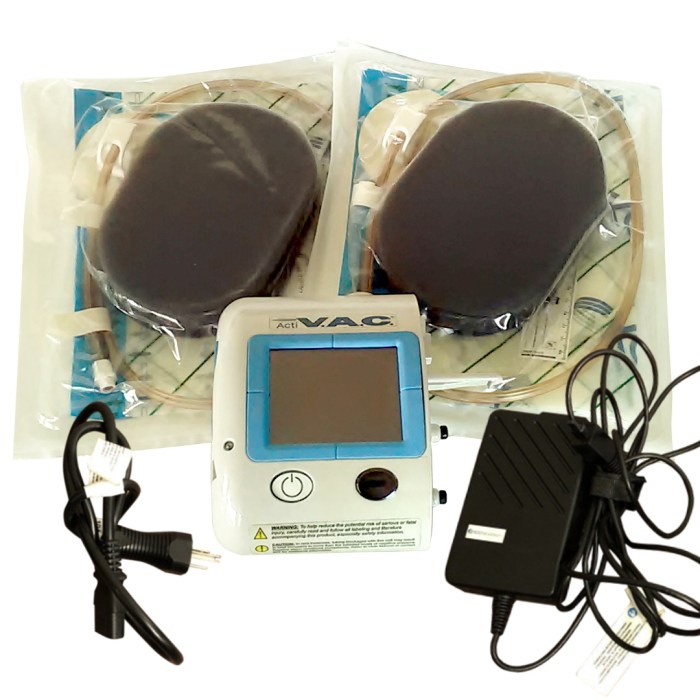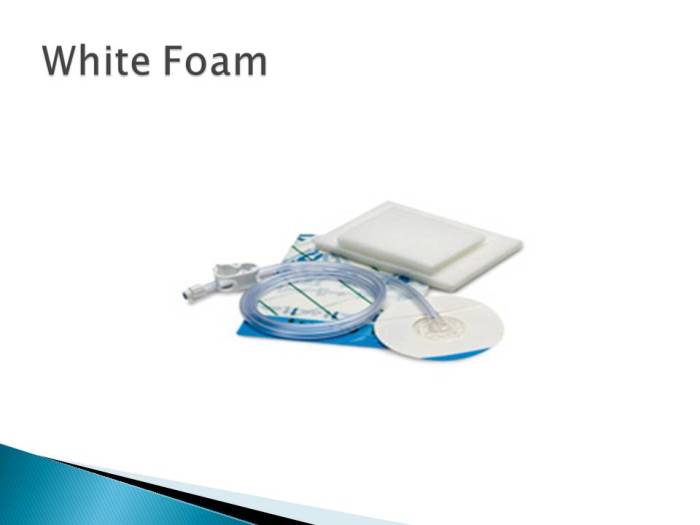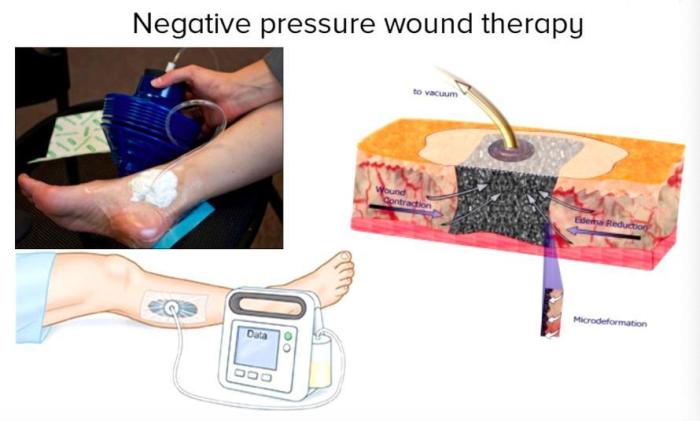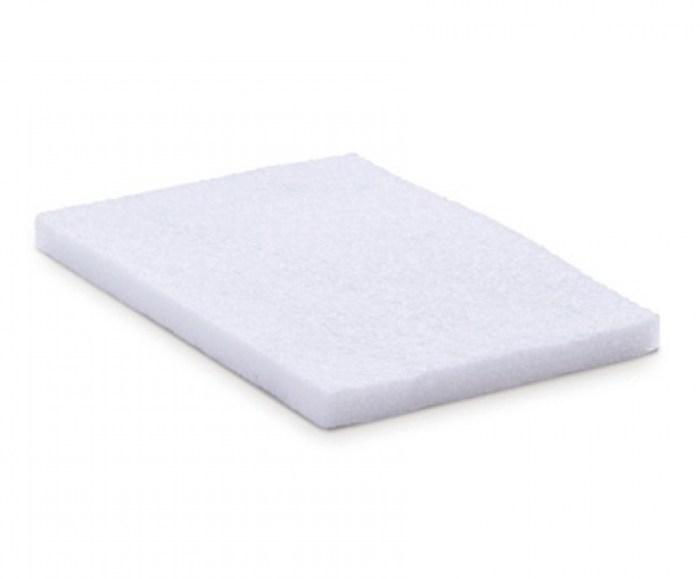White foam for wound vac is a versatile and effective wound care solution that offers a range of benefits. In this comprehensive guide, we will delve into the composition, mechanism of action, clinical applications, considerations for use, and comparison with other wound care products to provide a thorough understanding of white foam dressings.
White foam dressings are composed of a soft, absorbent foam that is typically made of polyurethane or silicone. They are designed to absorb and manage wound exudate, creating a moist wound environment that promotes healing. White foam dressings are available in a variety of shapes and sizes to accommodate different wound types and locations.
White Foam Wound Dressing Materials

White foam wound dressings are an essential component of modern wound care. They are composed of a hydrophilic polyurethane foam that is highly absorbent and conformable, making them ideal for a wide range of wound types.
The unique structure of white foam dressings allows them to absorb large amounts of exudate while maintaining a moist wound environment. This helps to promote wound healing by creating an optimal environment for cell growth and tissue regeneration.
White foam for wound vac is an essential tool for wound care. For more information on wound care, check out pobre ana pdf in english . White foam for wound vac can help to create a moist environment that promotes healing.
It can also help to absorb excess fluid and protect the wound from infection.
Types of White Foam Dressings
There are several different types of white foam dressings available, each with its own unique properties and applications. The most common types include:
- Non-adhesive dressings:These dressings are not attached to the skin, making them easy to apply and remove. They are ideal for wounds that are difficult to dress, such as wounds with irregular shapes or wounds that are located in areas that are difficult to reach.
- Adhesive dressings:These dressings are attached to the skin with a gentle adhesive. They are ideal for wounds that are likely to move or be subjected to friction. Adhesive dressings can also be used to secure other wound dressings in place.
- Absorbent dressings:These dressings are designed to absorb large amounts of exudate. They are ideal for wounds that produce a lot of fluid, such as wounds that are infected or wounds that are healing slowly.
- Conformable dressings:These dressings are designed to conform to the shape of the wound. They are ideal for wounds that are located in areas that are difficult to dress, such as wounds on the face or hands.
The choice of white foam dressing will depend on the specific needs of the wound. It is important to consult with a healthcare professional to determine the best dressing for a particular wound.
Mechanism of Action for White Foam Wound Dressings

White foam wound dressings are advanced wound care products designed to effectively manage wound exudate and promote wound healing. They possess unique properties that enable them to absorb and retain large volumes of exudate, creating an optimal wound environment for healing.
Exudate Absorption and Management
White foam dressings are highly absorbent due to their porous structure, which allows them to rapidly absorb and retain large quantities of wound exudate. This exudate management is crucial for preventing wound maceration and promoting wound healing. Excessive exudate can hinder wound healing by creating a moist environment that favors bacterial growth and impairs tissue repair.
By effectively absorbing and managing exudate, white foam dressings help maintain a balanced wound environment, reducing the risk of infection and promoting optimal healing.
Moist Wound Environment, White foam for wound vac
White foam dressings create a moist wound environment, which is essential for facilitating wound healing. A moist environment promotes cellular migration and proliferation, angiogenesis (formation of new blood vessels), and collagen deposition. These processes are crucial for tissue regeneration and wound repair.
White foam dressings maintain a moist wound environment by absorbing and retaining exudate, preventing it from evaporating and creating a dry wound bed.
Prevention of Wound Maceration
Wound maceration occurs when excessive moisture accumulates in the wound bed, leading to tissue damage and delayed healing. White foam dressings help prevent wound maceration by effectively absorbing and managing exudate, maintaining a balanced wound environment. By preventing excessive moisture accumulation, white foam dressings protect the wound bed from damage and promote optimal healing conditions.
Clinical Applications of White Foam Wound Dressings

White foam dressings are versatile wound care products suitable for managing a wide range of wound types. Their unique properties make them particularly beneficial for wounds requiring moisture management, protection, and support.
Suitable Wound Types
- Pressure Ulcers:White foam dressings provide cushioning and pressure redistribution, reducing pressure on vulnerable areas and promoting healing.
- Diabetic Foot Ulcers:Their absorbent nature helps manage exudate, creating a moist wound environment conducive to healing.
- Surgical Wounds:White foam dressings protect the wound site from external contaminants, reducing the risk of infection and promoting optimal healing.
- Minor Burns:They provide a cooling and soothing effect, reducing pain and promoting healing.
Benefits of White Foam Dressings
- Moisture Management:White foam dressings absorb excess wound exudate, creating an optimal moisture balance that supports healing.
- Protection:They provide a physical barrier against external contaminants, reducing the risk of infection and promoting wound healing.
- Cushioning:White foam dressings provide cushioning and pressure redistribution, reducing pressure on vulnerable areas and promoting healing.
- Conformability:They conform to the wound bed, ensuring optimal contact and maximizing effectiveness.
Frequency of Dressing Changes
The frequency of white foam dressing changes depends on the wound condition and exudate level. Generally, dressings should be changed when they become saturated or when the wound condition changes. For heavily exudating wounds, more frequent changes may be necessary, while less exudative wounds may require less frequent changes.
Considerations for Using White Foam Wound Dressings: White Foam For Wound Vac

When using white foam wound dressings, it is crucial to consider specific factors to ensure optimal wound management. These considerations include proper assessment of the wound, correct application techniques, and potential complications associated with their use.
Appropriate Size and Shape Selection
Selecting the appropriate size and shape of a white foam dressing is essential for effective wound coverage and absorption. The dressing should be large enough to extend beyond the wound edges by at least 2 cm, providing a sufficient margin to absorb exudate and prevent leakage.
The shape should conform to the wound contours, ensuring proper contact and minimizing gaps or folds that could hinder healing.
Proper Application Techniques
Proper application techniques are vital to maximize the performance of white foam dressings. The wound bed should be clean and dry before applying the dressing. The dressing should be placed gently over the wound, ensuring it is smooth and wrinkle-free.
The edges should be sealed securely to prevent leakage and maintain a moist wound environment. Regular monitoring and dressing changes are necessary to assess wound progress and prevent complications.
Potential Complications
While white foam dressings are generally well-tolerated, potential complications can occur, including:
- Skin irritation:Prolonged contact with the dressing can cause skin irritation, redness, or itching, especially in patients with sensitive skin.
- Allergic reactions:Some individuals may develop allergic reactions to the materials used in white foam dressings, such as adhesives or chemicals.
- Maceration:Excessive absorption of wound exudate can lead to maceration of the surrounding skin, causing it to become soft and fragile.
Comparison of White Foam Wound Dressings to Other Wound Care Products

White foam wound dressings are commonly used in wound care due to their absorbency, conformability, and cost-effectiveness. However, it is important to compare them to other wound care products to determine the best option for different clinical settings.
Absorbency
White foam dressings are highly absorbent, making them suitable for wounds with moderate to heavy exudate. They can absorb and retain large amounts of fluid, keeping the wound bed moist and promoting healing. Compared to gauze dressings, white foam dressings are more absorbent and can hold more exudate, reducing the frequency of dressing changes.
Conformability
White foam dressings are conformable, allowing them to conform to the contours of the wound bed. This is important for wounds in difficult-to-dress areas or on uneven surfaces. Compared to alginate dressings, white foam dressings are more conformable and can be easily cut to fit the shape of the wound, providing a better seal and reducing the risk of leakage.
Cost-effectiveness
White foam dressings are generally cost-effective compared to other wound care products. They can be used for longer periods due to their high absorbency, reducing the frequency of dressing changes and the overall cost of wound care. Compared to hydrocolloid dressings, white foam dressings are less expensive and can be a more affordable option for patients and healthcare providers.
Advantages and Disadvantages of White Foam Dressings
- Advantages:
- Highly absorbent
- Conformable
- Cost-effective
- Easy to apply and remove
- Disadvantages:
- May not be suitable for wounds with minimal exudate
- Can be bulky in some cases
- May not adhere well to dry wounds
Table Summary of Key Differences
| Characteristic | White Foam Dressings | Gauze Dressings | Alginate Dressings | Hydrocolloid Dressings |
|---|---|---|---|---|
| Absorbency | High | Low to moderate | Moderate to high | Low to moderate |
| Conformability | High | Low | Moderate | Moderate |
| Cost-effectiveness | Moderate | Low | High | High |
| Suitability for wounds with minimal exudate | No | Yes | Yes | Yes |
FAQ Corner
What are the benefits of using white foam dressings?
White foam dressings offer several benefits, including their ability to absorb and manage wound exudate, create a moist wound environment that promotes healing, and prevent wound maceration.
How often should white foam dressings be changed?
The frequency of dressing changes depends on the wound condition and the amount of exudate being produced. In general, white foam dressings should be changed when they become saturated with exudate or when the wound shows signs of infection.
What are the potential complications associated with the use of white foam dressings?
Potential complications associated with the use of white foam dressings include skin irritation, allergic reactions, and wound infection. It is important to assess the wound and patient’s skin for any signs of irritation or infection before applying a white foam dressing.